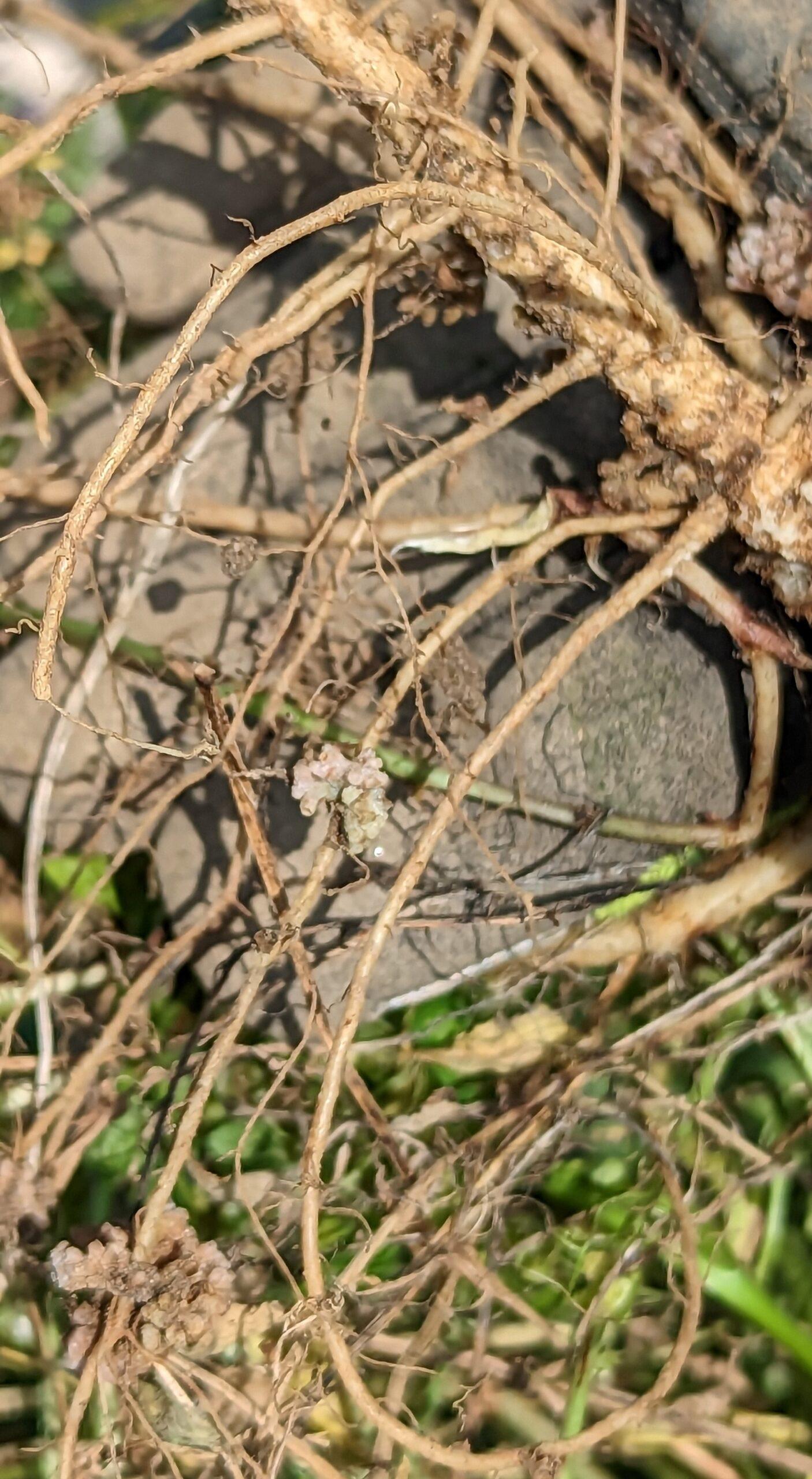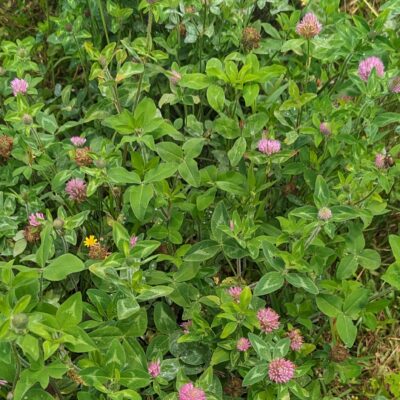Rhizobia are bacteria that have the super power of capturing atmospheric nitrogen and converting it to a source useful for plant growth. These bacteria make their homes on the roots of legumes, forming nodules.
Legumes are plants in the bean family (Leguminosae). Some are herbaceous plants, such as clovers, vetches, peas, and beans. Some are woody plants such as black locust (Robinia pseudoacacia), honey locust (Gleditsia triacanthos), Kentucky coffee tree (Gymnocladus dioicus), redbud (Cercis canadensis), and yellowwood (Cladrastis kentukea). What they have in common is divided leaves. The clovers and trefoils are trifoliate (that is, they have three leaflets). Crown vetch and hairy vetch have pinnately divided (that is, with many leaflets) leaves.

Perennial Sweet Peas also are trifoliate, but with a twist: the third leaflet is a modified tendril, which it uses to climb.

Lupines have a palmately (that is, the shape of your hand) divided leaf. Black locust, Yellowwood, and honey locust have pinnately compound leaves, but vigorous honey locust can have bipinnate leaves, that is ,divided a second time. Kentucky coffeetree has bipinnately divided leaves. The exception to the rule is the redbud. Its leaves are entire and heart-shaped.
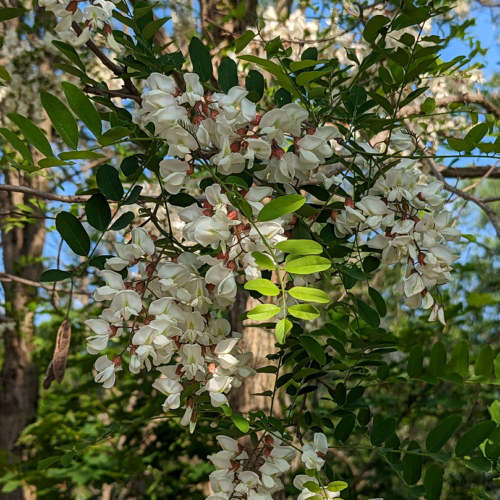

Herbaceous (non-woody) legumes include the clovers, trefoils, vetches, sweet pea and lupines. Woody legumes include Black locust, Honey locust, Kentucky coffee tree, Redbud, and Yellowwood.
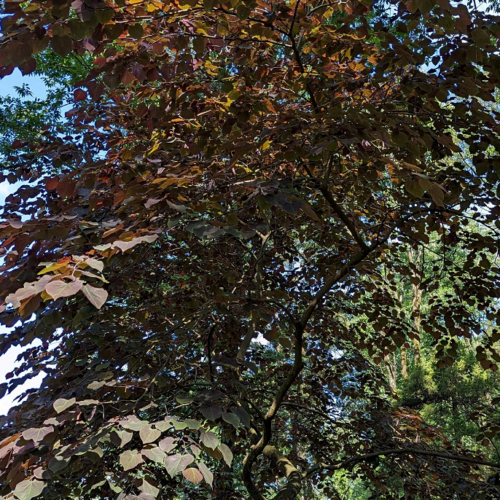
The Herbaceous Legumes:
- White clover (Trifolium repens)
- Red clover (Trifolium pratense)
- Alsike clover (Trifolium hybridum)
- Birds-foot trefoil (Lotus corniculatus)
- Crown vetch (Vicia coronaria)
- Hairy vetch (Vicia villosa)
- Perennial Sweet Pea (Lathyrus latifolius)
- Lupine (Lupinus)
Red clover, white clover, perennial sweet pea
The Woody Legumes:
- Black locust (Robinia pseudoacacia)
- Honey locust (Gleditsia triacanthos)
- Kentucky coffeetree (Gymnocladus dioicus)
- Redbud (Cercis canadensis)
- Yellowwood (Cladrastis kentukea)
What these plants also have in common are the bacterial root associates that help them be successful. Nitrogen is a macronutrient that is required for plant growth. The green of leaves is essentially due to nitrogen, or more precisely to chlorophyll, a nitrogen containing compound (C55H72O5N4Mg).
So, what does the Rhizobia get in return? They get a home within the plants’ roots (the nodules), and are supplied with sugars, water and solutes. That is to say, they are in fact well protected and provided for!
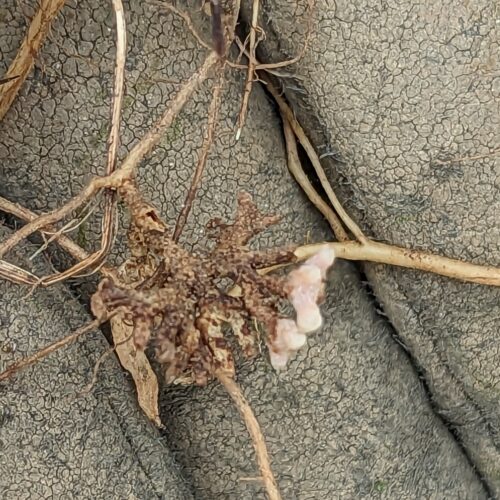
Encouraging Rhizobia
Conditions that help the legume-rhizobial association thrive are quite basic. Both plant and microorganism require moisture, gas exchange, and organic matter. These are the three essential elements for plant health. To encourage rhizobial inoculations onto your legumes, practice the best horticultural practices, including (1) plant or top-dress with a good compost. If in an annual or vegetable garden, work in the compost into the top inch or two of soil, (2) avoid soil compaction: mulch with a 4” layer of woodchips or straw helps to minimize compaction, and (3) irrigate when dry. Following these simple guidelines will help rhizobia (and your plants) to thrive!

